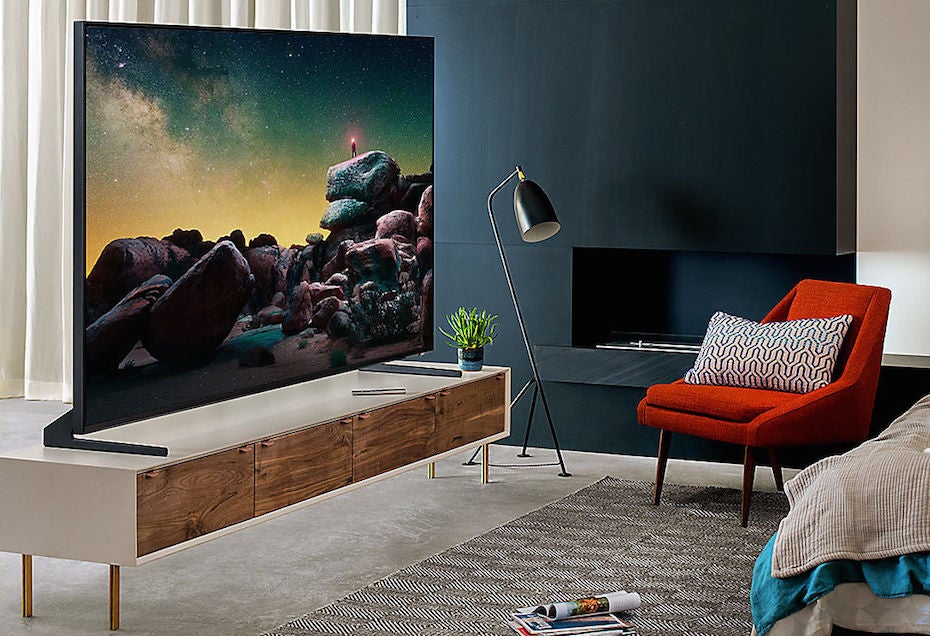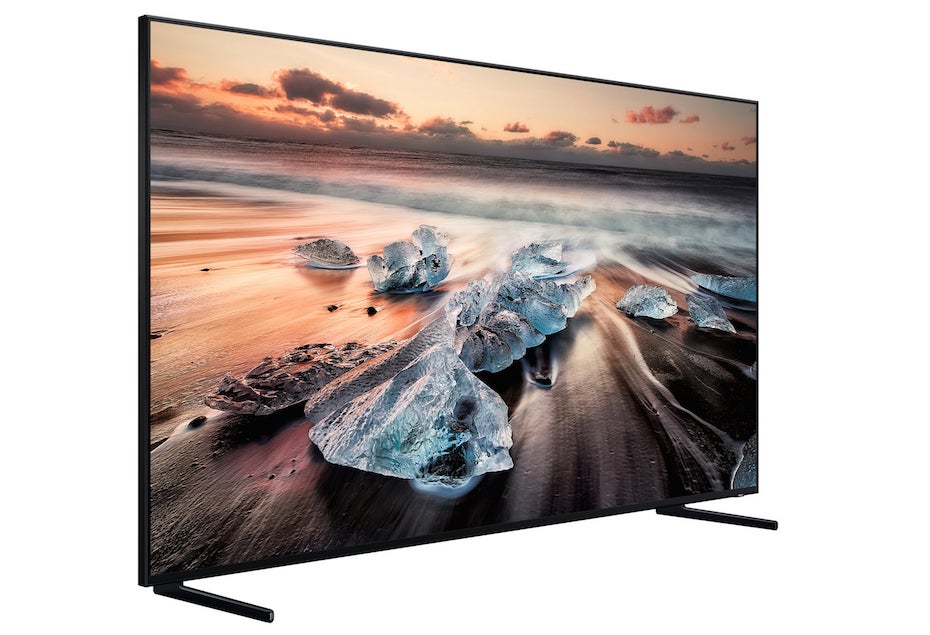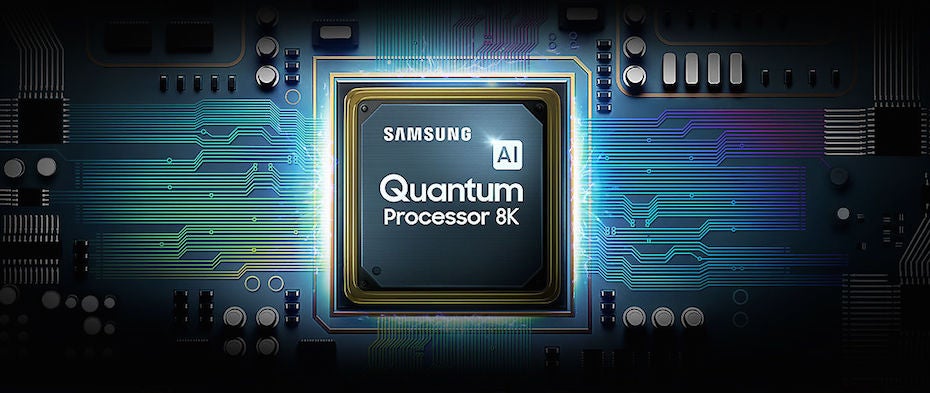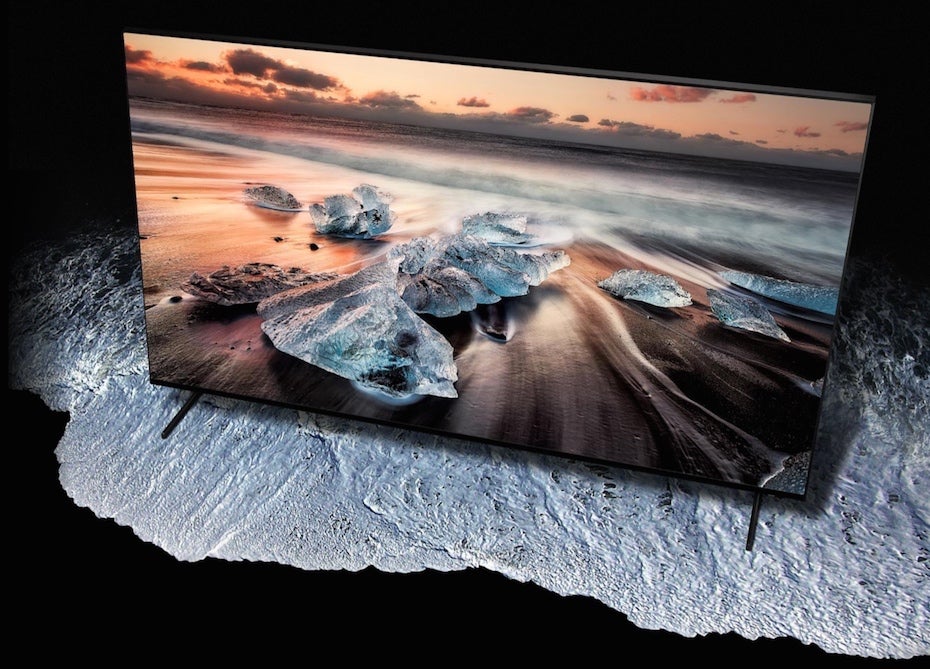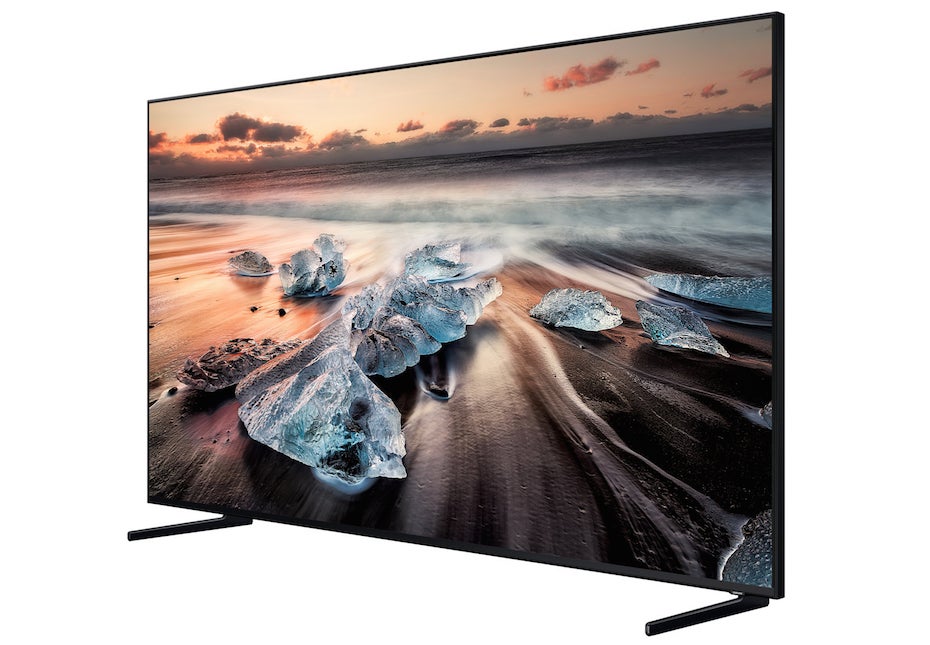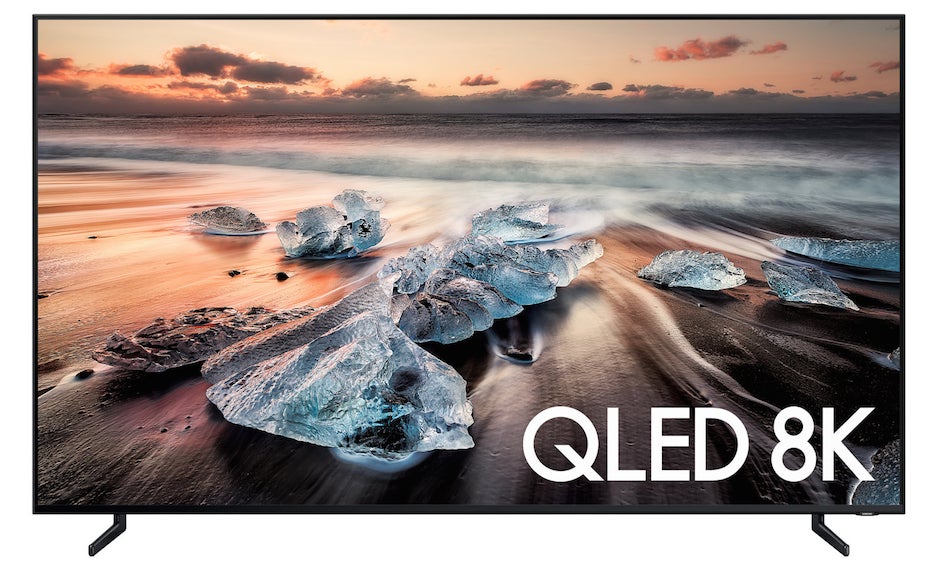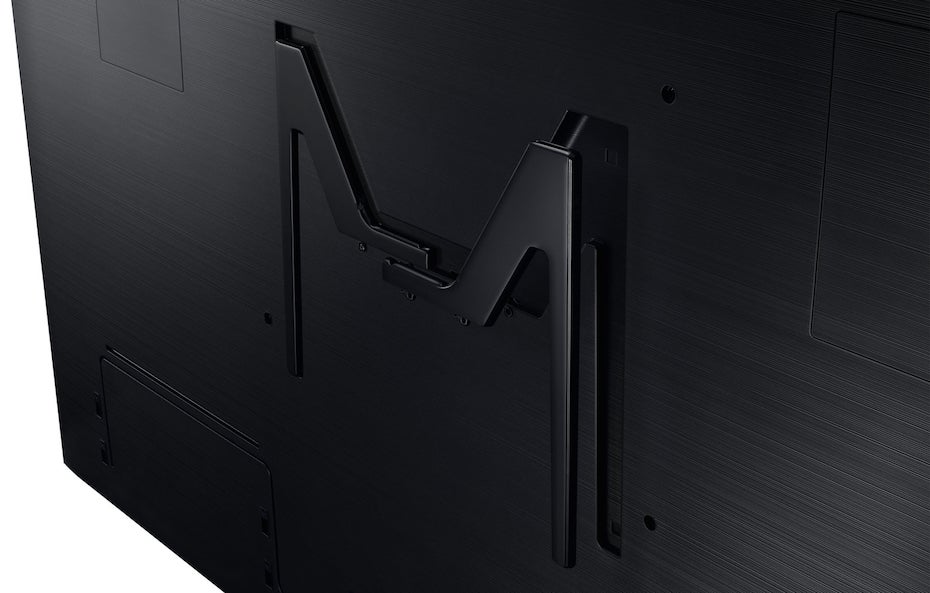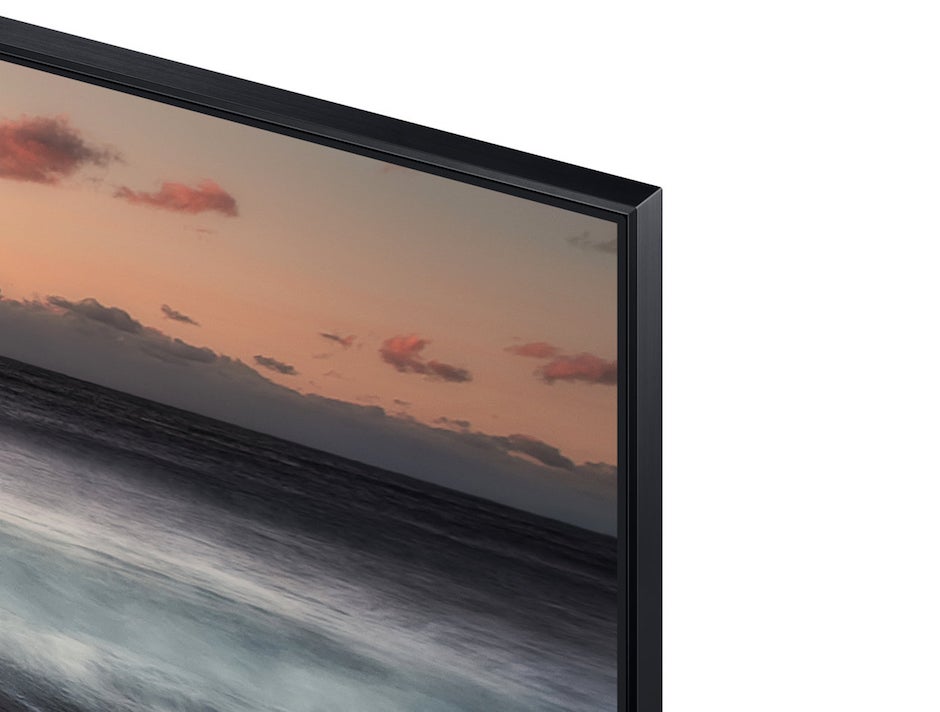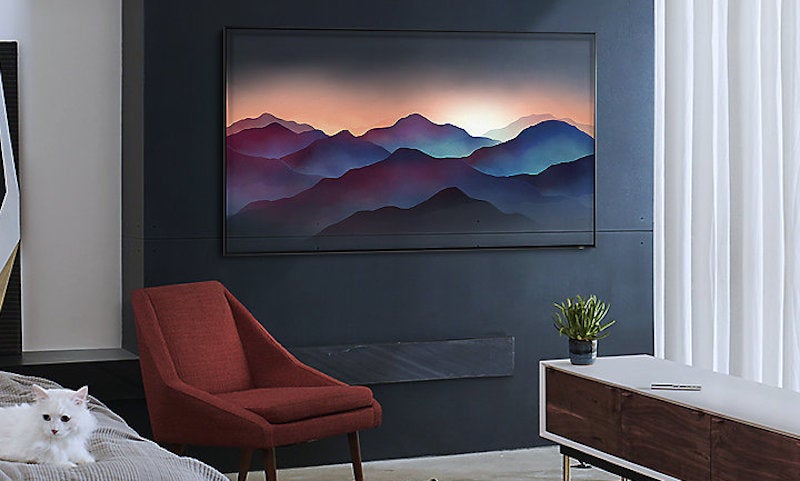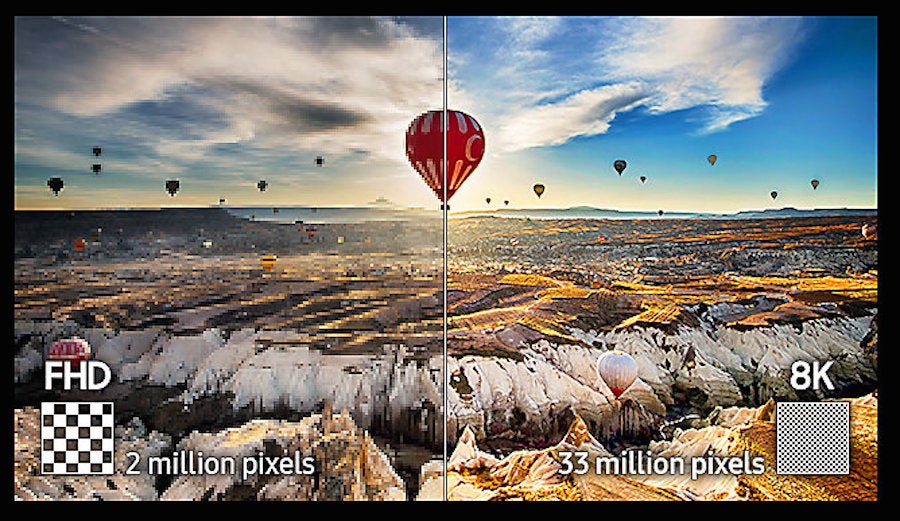Samsung QE85Q900R review: A stunning 8K TV and watershed moment for technology
Samsung QE85Q900R review: A stunning 8K TV and watershed moment for technology
8K has arrived and it's far more than just another number
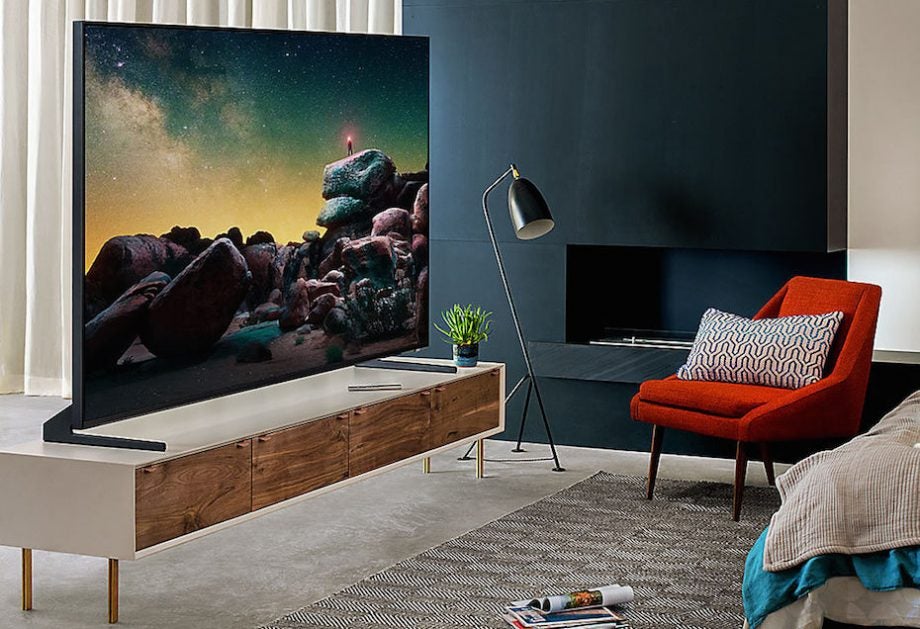
Verdict
The Samsung QE85Q900R is a watershed moment for television technology
Pros
- Native 8K pictures are like nothing you've seen before
- Brightness and colour are out of this world
- The upscaling processing makes 4K look better than it does on 4K TVs
Cons
- Some occasional backlight issues
- Some occasional colour fading issues
- Sound is a little swallowed
Key Specifications
- Review Price: £15,000
- 85-inch LED screen with direct lighting and local dimming
- Native 8K resolution
- HDR10, HDR10+, HLG HDR support
- 8K AI Upscaling processing
- Eden 2.0 smart system with voice recognition
What is the Samsung QE85Q900R?
The Samsung QE85Q900R is a watershed moment for television technology. Admittedly, such moments seem to happen almost weekly these days – at least in the minds of tech marketing folk. But in this case we really are talking about a TV that moves the goalposts substantially forward in not one but two key directions.
For a start, it’s the first ‘proper’ 8K TV. Secondly, it’s far and away the brightest TV ever released. Put these two innovations together, and you’ve got a set that can take you to picture quality places you’ve never been before.
Related: Best TV
Samsung QE85Q900R – Design and build quality
Considering what a dazzler it is when it’s switched on, the QE85Q900R’s bodywork looks a bit dour. Its colossal 85-inch screen rests within a well-built but utilitarian surround, and sits on a pair of almost comically large, aggressively angled feet. And at first glance, that’s pretty much it.
There are a couple of ‘hidden’ design saving graces, though. First, its use of an external connections box means that only a single cable runs into the screen. Second, it joins other top-end Samsung TVs this year by carrying an Ambient Mode. This lets you show a digital artwork or one of your own digital photographs on the screen – in low power mode – when you’re not actually watching the TV. This is much easier on the eye than the gaping 85-inch black hole you’d otherwise be faced with.
The QE85Q900R ships with two remotes. There’s a typical, fairly large, heavily buttoned one, and a smaller, metallic ‘smart’ one with a vastly reduced button count. Both actually work pretty well – though the smart one can become confusing if you start trying to take advantage of its ability to control other devices.
Related: Best 4K TV
Samsung QE85Q900R – Features
Increasing the QE85Q900R’s pixel count to 7680 x 4320 provides four times as many pixels as you get with a 4K TV. Which is pretty mind-boggling when you pause to think about it. That said, some will doubtless question whether so many pixels are really necessary when 4K already works so well. I’ll come back to this point later.
Samsung is sensibly not just relying on its ground-breaking resolution to attract buyers to the QE85Q900R. For instance, it also uses a direct LED lighting system with 480 individual dimming zones to produce the brightest picture ever seen on a home television. In fact, it measures an incredible 4,800 nits (in Dynamic mode) on a 10% white high dynamic range (HDR) square test signal. That’s almost twice as high as any figure recorded from any rival TV.
This brightness has the potential to deliver the most exciting HDR picture yet. Plus, for the first time, it potentially allows the screen to play 4K Blu-rays mastered to brightness peaks of 4000 nits without having to lose detail and toning information in the brightest picture areas.
Given that native 8K content is currently as rare as hen’s teeth, another key feature of the QE85Q900R is its brand new Quantum 8K processing engine. This includes an ‘8K AI Upscaler’ that draws on a database of video content know-how to figure out how best to add the millions – and millions – of extra pixels required to turn 4K, HD and even standard definition sources into 8K.
The AI part of the 8K AI Upscaler name is perhaps a touch optimistic. The TV does not, it turns out, learn to upscale better ‘on the job’. But Samsung does say the upscaling database will be updated via firmware as their own research continues to deliver improvements.
Related: What is 8K?
The sort of ‘uber processing’ required to convert lower resolutions to 8K may set alarm bells ringing with videogamers. After all, heavy processing tends to delay how quickly screens render pictures. Which can, of course, be the difference between life and death in a fast-reaction game.
Happily, though, the QE85Q900R takes less than 20ms to render images if you select its Game picture preset. This holds good with all source resolutions, and is essentially on a par with the best 4K TVs.
The QE85Q900R uses the same so-called Eden 2.0 smart TV interface found on pretty much all Samsung 2018 TVs. This is a good thing for the most part, given how compact, slick and easy to personalise the interface is. There’s support for most of the main video streaming platforms and UK catch-up TV services, too.
Netflix, YouTube, Amazon Prime, Now TV, Rakuten, the UK’s main terrestrial broadcaster catch up services… they’re all there. Netflix, YouTube, Rakuten and Amazon Prime all support 4K and HDR streaming, too. The only pity is that the catch-up services aren’t available in either a YouView or Freeview Play ‘wrapper’.
Related: Best soundbar
All of the 85Q900R’s features and sources can be accessed via a comprehensive and effective voice recognition system. The 85Q900R’s connections situation is complicated. The One Connect box currently carries four HDMIs, three USBs and the usual tuner and network connections.
However, none of the four HDMIs is currently made to the brand new HDMI 2.1 standard. That means that while the TV delivers some HDMI 2.1 features, including automatic game mode switching and VRR game support, it can’t handle 8K HDR at higher than 30 frames a second.
Samsung is, however, going to start shipping Q900R TVs with new One Connect boxes in the new year that carry a single HDMI 2.1 port. These boxes will also apparently be available as upgrades to people who buy Q900Rs now. Though Samsung can’t currently state the exact terms on which this upgrade might take place.
The 85Q900R supports three types of HDR: the standard HDR10 system, the HDR10+ system (which adds scene by scene data to boost TV playback), and HLG (predominantly used for broadcasts). As ever with Samsung TVs, there’s no support for the Dolby Vision system.
Related: Best streaming sites
Samsung QE85Q900R – Set up
The first bit of advice for anyone who buys any Q900R is to immediately turn off the TV’s Eco functions. Especially the feature that adjusts the picture in response to the amount of light in your room. This is on by default in the TV’s out of the box ‘Standard’ picture preset, but can cause huge amounts of shadow detail to be lost if you ever watch a film in a dark room.
Note that if you adjust the TV’s contrast or brightness settings, the Eco settings should deactivate automatically. When it comes to picture presets, my personal favourite by far was Standard. Once the Eco features had been turned off, anyway. This delivers extreme HDR punch with its 4,800 nits of peak brightness, and takes full advantage of the TV’s 8K upscaling technology.
The Movie preset delivers more accurate colours, and can also look more colour rich with some specific (rare) darkish images that contain a broad mix of light and dark areas. The Movie mode is darker, though, and its pictures look significantly softer than those of the Standard mode.
When watching films and TV shows containing a lot of mixed brightness images in Standard mode, you might find it helpful to reduce the backlight a few points. I’d advise setting the Digital Clean View feature to Off for 4K/8K content, to Low for good quality HD content, and to Auto for SD and poor quality HD. This provides the best balance between detail and noise with each source type.
Finally, while I’m not normally a fan of Samsung’s motion processing, I’d suggest using it on the QE85Q900R. This is partly because it helps retain the screen’s breathtaking sharpness when there’s motion in the picture. Also, though, Samsung’s 8K processing throws up less unwanted side effects from the motion processing than it does on other Samsung TVs.
Samsung QE85Q900R – Performance
So to the moment of truth: does an 8K resolution really make a difference? The answer is an emphatic – if maybe slightly surprised – yes.
The QE85Q900R’s native 8K playback is particularly mind-blowing. Samsung provided three 8K clips of 8K demo material for my tests, containing cityscapes, views of nature, and closeups of skin and clothing. Classic AV demo stuff. And every frame of this native 8K fare dazzled my eyes with its insane detailing, purity, three-dimensionality and essentially flawless colour blending and mapping.
The difference between full-bore 8K on the QE85Q900R and native 4K on an 82MU8000 sitting alongside it was huge. So much so that it would be instantly obvious to anyone who saw it, even from a normal viewing distance. You don’t need ‘golden eyes’, or your face stuck right up against the screen.
This does not mean, to be clear, that just shoving an 8K resolution into any TV will deliver similarly spectacular results. The huge scale of the QE85Q900R’s screen may be helping, for instance (we’ll be looking at smaller Q900Rs soon). You would also lose some of the resolution’s impact without the power of Samsung’s new processor. For instance, colours could lack the refinement to map accurately to such a small pixel pitch. Poor motion handling could cause some of that lovely detail to blur away. Inadequate brightness and contrast could flatten away the sense of depth and edge sharpness.
In fact, there are any number of ways in which a TV could undermine a native 8K pixel count. But incredibly, considering it’s the first native 8K TV we’ve seen, the QE85Q900R avoids pretty much every potential 8K ‘pothole’. To see native 8K on the QE85Q900R is to instantly want everything you watch to be native 8K. Sadly, though, while a few content makers are experimenting with the resolution, we’re a long way from 8K content arriving in the real world in any quantity. As a result, many people just don’t see the point of 8K TVs coming out now.
Here’s the thing, though. Watching sub-8K sources on the QE85Q900R quickly makes it obvious that it can make 4K pictures look better. What’s more, its pictures are also far from the nightmare you might expect with lower than 4K sources.
The way Samsung’s 8K AI upscaler adds what looks like genuine detail, sharpness and depth to 4K sources is truly remarkable. The results look at least halfway between 4K and 8K in their texture and purity. Even better, Samsung has managed to achieve this remarkable upscaling feat without the picture suffering with typical upscaling nasties.
So there’s practically no ghosting or over-emphasis of edges. Source grain generally looks natural rather than exaggerated. Curved or diagonal edges appear without so much as a hint of jaggedness. Colours are remapped to the higher resolution without looking clumpy, striped or ‘smoothed’. Areas of particularly fine detail don’t shimmer, fizz or blur. Motion doesn’t look softer than relatively static images. MPEG compression noise that might exist in the 4K sources is almost completely removed.
In other words, you can enjoy all the advantages of using processing to put millions more pixels into a 4K image with none of the disadvantages.
As well as being a dazzling experience in itself, the quality of the QE85Q900R’s upscaling makes it relevant as a premium TV option right now, since it means you don’t have to wait for native 8K content for the TV to significantly improve your viewing experience – though it is also true that the TV is at its jaw-dropping best when fed native 8K.
With HD and SD sources, the QE85Q900R situation is a bit more complex. In both cases, even an upscaler as remarkably accomplished as the one here can’t deliver a real 8K experience. With HD you can get something close to 4K if the source image is very clean. With SD you get something approaching HD – or a bit better.
The results here depend heavily on the quality of the source. For instance, while the upscaling can do a great job of polishing away heavy MPEG noise from streamed sources, it can’t then readily conjure up vast amounts of new detail and texture. Or if an SD source is very grainy, you have to use the Auto setting of the Digital Clean View on Auto to stop the upscaled picture looking noisy, even though doing this reduces the sense of resolution.
Let’s be clear, though. While upscaled SD and HD doesn’t look 8K, nor does it look anything like the horror show you might expect from pictures that have been upgraded so far. In fact, particularly in HD’s case, the upscale pictures often look better than they would on most 4K TVs. Especially as the 8K upscaler continues to remove the double edging and other issues upscalers usually deliver.
As suggested earlier, the 85Q900R has lots of other picture attractions beyond its resolution. Its brightness is incredible, for instance. As a result, HDR pictures look more dynamic, vibrant, emphatic and realistically intense than anything we’ve seen on a consumer TV before. Even Samsung’s Q9FN 4K TV looks a bit dull by comparison, despite being the previous HDR brightness champ.
The 85Q900R’s unprecedented brightness also unlocks unprecedented colour volumes (the application of brightness to colour tones). This again is massively important to delivering the wide colour component attached to pretty much all HDR sources.
Samsung’s QLED technology seems key here, too. Samsung’s take on Quantum Dot colour technology (which does away with LCD’s usual colour filters) wraps the QDs up in metal sheathing, so that they can be driven harder without degrading. One potential big problem for the world’s brightest LED TV is backlight management. Here again, though, for the most part the 85Q900R performs amazingly well.
For starters, it can deliver black colours that look exceptionally deep and rich for LCD technology. In fact, they sometimes get close to the legendary black levels associated with OLED screens.
Even more surprisingly, the QE85Q900R can show bright HDR objects in the middle of near-black surroundings with practically no light spillage around the bright object.
Delivered by a combination of the 480 individually controllable dimming zones and Samsung’s clever new dimming zone processing, this lack of backlight ‘haloing’ is especially impressive when you consider the screen acreage the backlight system is having to work across.
The QE85Q900R uses its extra brightness to retain more shadow detail in dark areas of HDR and SDR pictures than the Q9FN TVs, too. This helps high contrast HDR pictures look more balanced and natural.
Unexpectedly, you can even watch the QE85Q900R from a wider angle than the Q9FN sets without colour and contrast plunging. Don’t expect the same benefit from the 65-inch and 75-inch Q900R models, though. Apparently the 85Q900R’s viewing angle benefit is down to some small difference in its panel construction.
For all its frequently unbridled magnificence, the QE85Q900R is not perfect. So here’s what you need to bear in mind before you rush out of the house with £15,000 in your pocket.
For one thing, the stunning brightness comes with a few strings attached. First, while Samsung’s decision to make dark scenes brighter here than they look on the Q9FN yields more shadow detail, it can introduce more general greyness to proceedings. The brightness can also occasionally leave subtle colours looking a little wan if a scene contains multiple bright and dark areas.
While the 85Q900R generally suffers impressively little with backlight haloing around bright objects, occasionally a trace of light leakage escapes into the black bars around wide aspect ratio films. Large expanses of very dark detail can occasionally ‘glow’ a little, too.
The 85Q900R also takes more brightness out of very small light areas of HDR pictures than OLED TVs or the Q9FN – presumably to keep blooming under control. It actually looks brighter, though, with all but the smallest HDR highlights.
The backlight can occasionally lack subtlety in its response to changes in the image content. For instance, cuts from a bright to dark shot can cause a sudden noticeable step down in the picture’s light levels a split second or so after the cut has happened. Finally, once in a blue moon, areas of the picture that undergo gradual brightness changes within a shot can pulse slightly. For me, though, none of the 85Q900R’s issues are in any way deal breakers. Many of its picture strengths, on the other hand, might reasonably be called deal makers.
The 85Q900R’s sound is much less inspiring than its pictures. Its rear-mounted speakers don’t have the power, dynamic range or forward-facing presence to make an impact in any way commensurate with the TV’s barnstorming pictures. Activating Samsung’s Smart Sound feature helps a bit, thanks to the way it continually tweaks the sound profile to suit whatever you’re watching. The sound is also free of crackles, distortions, buzzes and other speaker failings. Overall, though, I can’t help but think Samsung figures that anyone who can drop £15k on a TV will have a separate sound system.
Should I buy a Samsung QE85Q900R?
Clearly, the QE85Q900R’s vast size and £15k price tag will limit its potential audience. If neither of those obstacles is insurmountable to you, then the QE85Q900R is hard to resist. After all, it combines extreme future proofing with a palpable performance step up with today’s content, too.
If you can live without the 8K resolution, you could consider the LG OLED77C8 instead. This 4K TV is eight inches smaller and can’t deliver anything like the brightness or sharpness of the 85Q900R. But its OLED panel delivers gorgeous black levels and contrast. It also costs ‘just’ £7,000.
Another option would be the 75-inch Samsung 75Q9FN. This £5,400 set delivers deeper blacks than the 85Q900R and some of the brightest HDR pictures in the TV world. It’s still not as bright as the QE85Q900R, though, and can suffer with some detail crushing in dark areas. Plus it’s only 4K.
Verdict
The Samsung QE85Q900R does a phenomenal job of deconstructing consumer cynicism over the idea of 8K TVs. If you can find any native 8K content to feed it, you’ll be stunned at how much better it looks than 4K. It’s like an enhanced version of the real world has suddenly burst into your living room. What really matters right now, though, is the way the 85Q900R’s incredible upscaling system makes it the best all-round TV with 4K content, too.
How we test televisions
We test every TV we review thoroughly over an extended period of time. We use industry standard tests to compare features properly. We’ll always tell you what we find. We never, ever, accept money to review a product.

